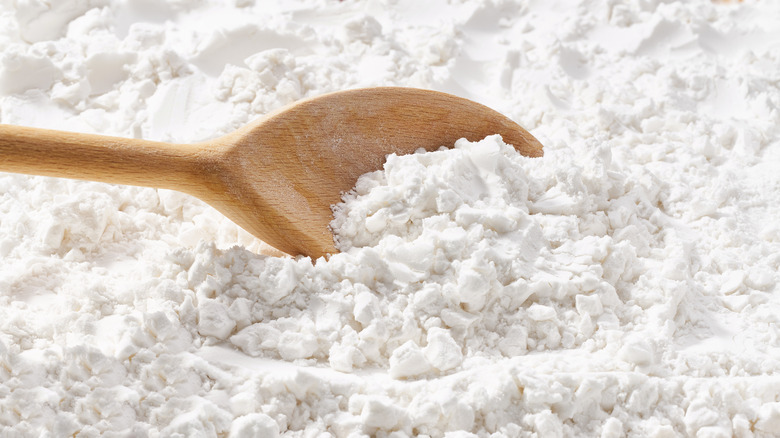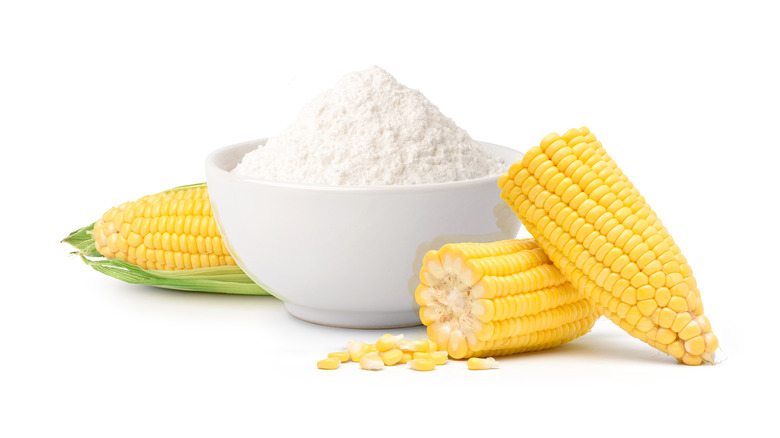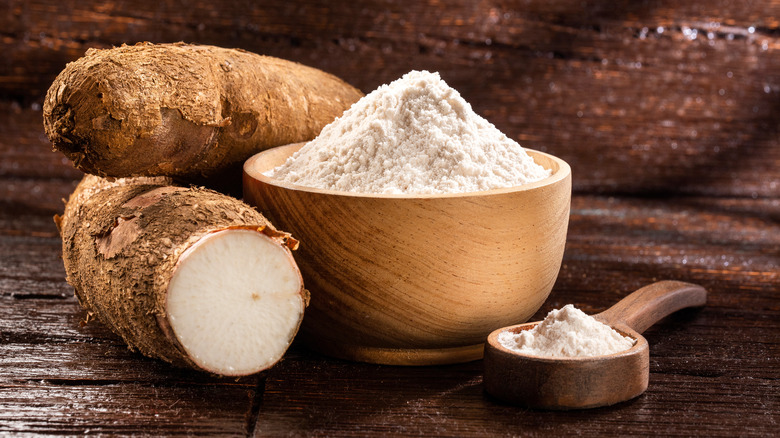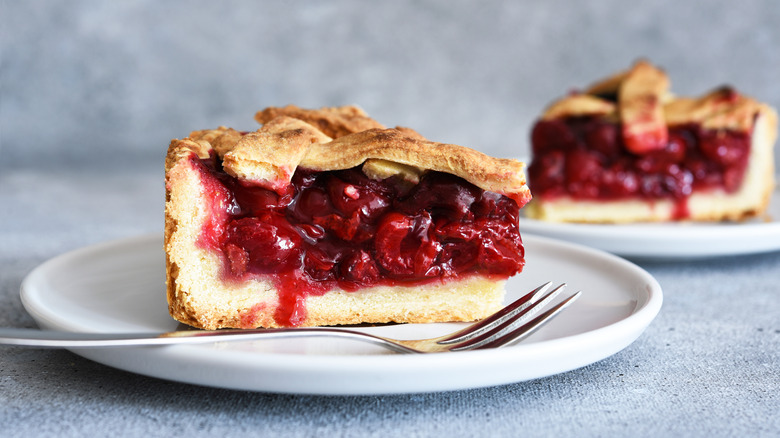Tapioca Starch Vs. Corn Starch: What's The Difference?
If you've ever skipped the starch in a sauce recipe, you know the difference it makes. Starches provide the consistency and complexity of food in the form of texture, or what is often referred to as body. In the culinary world, there is a term called "nappé", which indicates the correct thickness of a sauce. You coat a spoon evenly with the sauce and draw a line down the back. If it's a clean line, the sauce is not too thick or too thin. Goldilocks would be happy (via Amalida's Ethnic Spoon).
White flour is commonly called for in recipes to thicken sauces. However, there are a handful of other options that provide a similar, if not better body. Cornstarch is probably the most popular lining shelves, but tapioca starch can also be found in pretty much every grocery store. They look the same — bright white, fine, and powdery — and are gluten-free alternatives to white flour.
But are the two interchangeable in the kitchen? What's the difference between cornstarch and tapioca starch, and when should you opt for one over the other?
Classic cornstarch
It won't come as a big surprise that cornstarch comes from corn. It's made from the endosperm, or what we know as what makes up the kernel we pop for popcorn. Its applications are endless, ranging from cooking to cleaning. Its shelf-life is infinite. Invented in the mid-19th century, the ubiquitous yellow and blue container we are most familiar with has had a prominent place in most cabinets since the late 1800s (via Argo).
Cornstarch is tasteless and provides a smooth and glossy finish to the dishes it's used in. It is composed solely of carbohydrates. With twice the thickening power as white flour, it is often preferred in culinary applications (per The Spruce Eats). It is commonly used as an anti-caking agent in products like shredded cheese and powdered sugar.
Around the household, cornstarch can be used to wash windows and polish silver. It can even treat sunburn and absorb smells from a stinky gym bag.
Talented tapioca
Tapioca starch is derived from a tuber called cassava, which hails from Brazil. It is commonly referred to as yucca. A tuber is where a root vegetable stores all the nutrients it needs for the next growing cycle, via Gardening Know How. Cassava is a very starchy vegetable — starchier than potatoes.
Just like cornstarch, per The Spruce Eats, it has an almost neutral taste and is used to thicken sauces and gravies. It lends a silky texture to dishes and is translucent when hydrated. It's what gives the slippery consistency to tapioca pudding and to the balls in bubble tea, or boba. In baking, tapioca starch provides a chewy texture while maintaining moisture, which makes it a great option for gluten-free goods. When used to coat foods for frying, it offers a crispy crunch, per Food Network. For sweet applications in the kitchen, tapioca is often dyed, as with black boba pearls.
Semi-even swap
While the final product and its uses are similar, the biggest difference between cornstarch and tapioca starch is what the starch is derived from. Cornstarch is made from maize, a grain. Tapioca starch is made from a root vegetable.
The two are interchangeable the majority of the time, especially for thickening sauces and providing consistency to components like pie fillings. For such culinary purposes, cornstarch is more potent. Use double the amount of tapioca starch if it's what you opt for instead. They are also not a fair swap when it comes to temperature. Tapioca remains stable in freezing temperatures and is the better option for frozen products, whereas cornstarch begins to break down, per Food52. On the other hand, tapioca becomes stringy when it reaches a boiling point, while cornstarch is more tolerant of high heat.
Another difference lies in the appearance of the final product, per Bob's Red Mill. Cornstarch results in a more matte, opaque finish as opposed to the shiny, translucent finish common with tapioca starch. There's also a cost factor — tapioca tends to have a higher price point than cornstarch.



